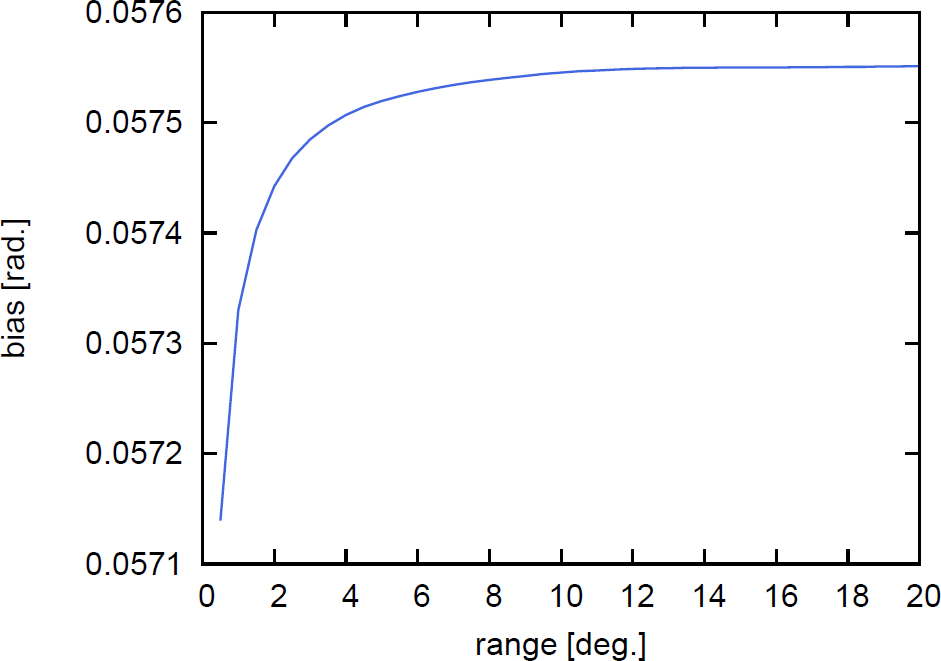Requirement analysis for LiteBIRD’s optical system
JAXA Supercomputer System Annual Report April 2020-March 2021
Report Number: R20EDU20199
Subject Category: Space and Astronautical Science
- Responsible Representative: Toru Yamada, Director, Institute of Space and Astronautical Science, Department of Space Astronomy and Astrophysics
- Contact Information: Ryo Nagata(nagata.ryo@jaxa.jp)
- Members: Ryo Nagata
Abstract
The mission objective of LiteBIRD, which is the second ISAS strategic large mission, is to make a full-sky map of the microwave background polarization to extract a signal of the primordial gravitational waves from an odd parity pattern of the polarization map. Verification of the cosmic inflation before the hot Big-Bang is expected to be given by LiteBIRD’s science achievement. The expected signal originating from the primordial gravitational waves is fainter by far than that from the primordial density fluctuations which has been already observed. Therefore, identification and mitigation of systematic errors are crucial in development, observation, and analysis.
The operation of JSS’s new supercomputing sysytem started in this year. Due to it, we worked on migration of our numerical software to the new execution environment. We adjusted its libraries to the new processor so that numerical simulations yield results consistent with those given in the previous environment. Also, we started a study about dependence of polarization properties on beam sidelobes. We established an evaluation method of isolating near sidelobe contributions from polarization angular responses by using a simulation model of Low Frequency Telescope (LFT), which will be followed by actual evaluation based on measured beam data.
Reference URL
Please refer to ‘LiteBIRD: Lite (Light) satellite for the studies of B-mode polarization and Inflation from cosmic background Radiation Detection.‘.
Reasons and benefits of using JAXA Supercomputer System
LiteBIRD performs scan observation for mapping of the microwave background polarization over the entire celestial sphere. In data acquisition simulations, an integration operation for beam convolution is repeated at the sampling frequency, 19Hz, for a period of one year. Since beam functions spread over an area of several thousand square degrees with arcminute resolution, its integrands are evaluated on several million grid points at every sampling occasion. The integrations with their associated coordinate transformations require a high performance computing resource. The outcomes of this research are being counted as bases of optics design in the LiteBIRD project which is the second ISAS strategic large mission.
Achievements of the Year
Migration of our numerical software to the new execution environment in TOKI-SORA from the previous one in SORA-MA was completed. With help of the JSS support desk, we updated its associated libraries to be adjusted to the new processor. Results of numerical simulations given in the new environment are consistent with those in the previous environment at a high precision. We found significant improvement in computing performance. Required computing time for a specific simulation case with some CPU cores was reduced to almost half of the one with equivalent CPU cores in the previous environment. This achievement provides an opportunity to extend the scope of our research project in the following years.
In addition, we numerically reproduced a measurement experiment of polarization properties by adopting a beam pattern based on a LFT simulation model and evaluated dependence of angle bias on a radial interval of the beam pattern which is shown in (Fig.1) where the beam pattern is for a 100GHz detector placed at the center of the focal plane. From the main beam to near sidelobe areas, an increase in angular bias of about 1 arcminute was found. Under the business continuity planning for counter measures against infectious diseases, measurement of polarization properties of the 1/4 LFT scaled model has been being carried out. We completed the preparation for actual evaluation based on the measured beam data.
Publications
– Non peer-reviewed papers
Concept design of low frequency telescope for CMB B-mode polarization satellite LiteBIRD: Proc. SPIE, 11453, 1145310 (2020)
– Web
http://litebird.jp/eng/
Usage of JSS
Computational Information
- Process Parallelization Methods: MPI
- Thread Parallelization Methods: OpenMP
- Number of Processes: 24
- Elapsed Time per Case: 1 Hour(s)
Resources Used(JSS2)
Fraction of Usage in Total Resources*1(%): 0.00
Details
Please refer to System Configuration of JSS2 for the system configuration and major specifications of JSS2.
| System Name | Amount of Core Time(core x hours) | Fraction of Usage*2(%) |
|---|---|---|
| SORA-MA | 6,517.76 | 0.00 |
| SORA-PP | 0.00 | 0.00 |
| SORA-LM | 0.00 | 0.00 |
| SORA-TPP | 0.00 | 0.00 |
| File System Name | Storage Assigned(GiB) | Fraction of Usage*2(%) |
|---|---|---|
| /home | 2.38 | 0.00 |
| /data | 476.84 | 0.01 |
| /ltmp | 488.28 | 0.04 |
| Archiver Name | Storage Used(TiB) | Fraction of Usage*2(%) |
|---|---|---|
| J-SPACE | 0.12 | 0.00 |
*1: Fraction of Usage in Total Resources: Weighted average of three resource types (Computing, File System, and Archiver).
*2: Fraction of Usage:Percentage of usage relative to each resource used in one year.
Resources Used(JSS3)
Fraction of Usage in Total Resources*1(%): 0.03
Details
Please refer to System Configuration of JSS3 for the system configuration and major specifications of JSS3.
| System Name | Amount of Core Time(core x hours) | Fraction of Usage*2(%) |
|---|---|---|
| TOKI-SORA | 167,842.45 | 0.04 |
| TOKI-RURI | 21.40 | 0.00 |
| TOKI-TRURI | 0.00 | 0.00 |
| File System Name | Storage Assigned(GiB) | Fraction of Usage*2(%) |
|---|---|---|
| /home | 6.36 | 0.00 |
| /data | 1,271.57 | 0.02 |
| /ssd | 63.58 | 0.03 |
| Archiver Name | Storage Used(TiB) | Fraction of Usage*2(%) |
|---|---|---|
| J-SPACE | 0.12 | 0.00 |
*1: Fraction of Usage in Total Resources: Weighted average of three resource types (Computing, File System, and Archiver).
*2: Fraction of Usage:Percentage of usage relative to each resource used in one year.
JAXA Supercomputer System Annual Report April 2020-March 2021



